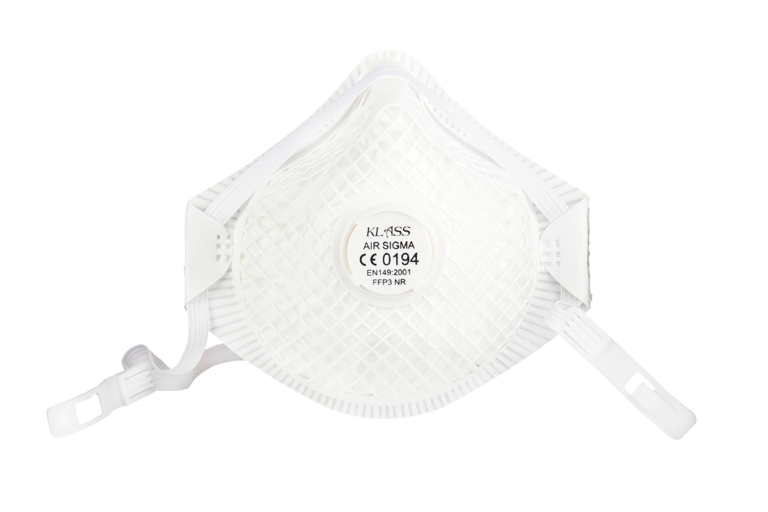An Introduction to RPE
FAQs
Respiratory protective equipment
Two types:
- Self-contained respirators
- ‘Filtering Face Piece’ masks. (FFP) Subdivided into; FFP1, FFP2 and FFP3 masks.
The certification for FFP masks are EN 149:2001+A1:2009 for (Applicable in the UK & Europe) as well as UKCA (Applicable in the UK.)
Food, manufacturing, agriculture, construction, pharmaceuticals, health, chemical, raw materials and more!
FFP3 masks are used when handling heavy metals, hardwood, brake dust, radioactive substances, pathogens such as viruses, bacteria and fungal spores as well as stainless steel welding.
It is becoming clear that most users prefer FFP3 masks as this offers the highest level of protection. It protects the wearer by ensuring they only breathe in one twentieth of the amount of dust in the air. However, the biggest mistake we see is improper use of FFP3 masks.
Simply wearing any FFP3 mask will not protect you. Once you have found an FFP3 mask you must be face fit tested with it.
Face fit testing is a process used to assess the effectiveness of a respirator in creating a seal around the wearer’s face. The purpose of face fit testing is to ensure that the respirator provides a proper and secure fit for the wearer, which is essential for the respiratory protection to be effective.
Face fit testing is typically carried out on disposable and reusable half-mask respirators, which are designed to fit snugly around the nose, mouth, and chin.
During face fit testing, the wearer dons the respirator and performs a series of exercises, such as bending over and moving their head from side to side, to simulate the conditions they may experience in their work environment. These exercises help to assess the fit of the respirator while the wearer is moving, which is particularly important when the respirator is used in high-risk situations, such as healthcare settings.
There are two main types of face fit testing: qualitative and quantitative. Qualitative face fit testing involves the use of a test agent, such as a bitter or sweet solution, which is released into the respirator while the wearer performs the exercises. If the wearer can taste the solution, this indicates that the respirator is not providing an adequate seal, and adjustments need to be made to achieve a better fit.
Quantitative face fit testing involves the use of specialised equipment to measure the amount of leakage around the seal of the respirator. This type of testing provides a more objective assessment of the fit of the respirator and is typically used in high-risk situations where a more accurate assessment of the fit is required.
It is important to note that face fit testing is not a one-time event and should be repeated regularly, particularly if there are changes to the wearer’s facial hair, weight, or dental work, which can affect the fit of the respirator. Regular face fit testing ensures that the respirator continues to provide effective protection against airborne hazards and reduces the risk of occupational illness and injury.
Essentially, a face fit test tells you if the mask you are wearing is protecting you. We recommend using a ‘FIT2FIT’ accredited professional face fit tester to conduct the test for you. If you need more information regarding face fit testing we can help .
FFP masks are made using special fabrics which all serve a purpose. The key fabric is the protective filter which works by stopping any particles being inhaled.
Our mask filter is a special Melt blown filter which is a high efficiency particulate air (HEPA) filter and is used for PPE face masks and respirators. This unique fabric blocks 99% of particles which are 0.3 microns or larger. More over melt blown fabric holds electrostatic charge for enhanced sub-micron particle filtration.
A key advantage of Microlin Cooper Klass masks compared to others in the market is the quality of the high filtration melt blown layer.
Our melt blown has been designed to pass the FFP3 standard with fewer amount of layers needed than other masks compared to the market.
For example, some masks may use 3-4 layers of the melt blown fabric along with other material layers to achieve the same result as our mask!
This means the mask is thinner thus it is easier to breathe and more comfortable to wear.
Failing to wear proper RPE in a toxic environment can be fatal. Over time exposure to dangerous particles can damage the body’s respiratory system leading to serious illness or death.
An exhalation valve allows the warm breath of the user to escape the mask without letting any unfiltered air inside the mask. Ultimately providing a more pleasant climate inside the mask.
The following points are to be met by certified FFP1, FFP2 and FFP3 respirators:
- The following information is printed on the product: the CE mark with the four-digit identification number of the certification body, the FFP protection level, the EN standard, the manufacturer’s name and the product number.
- The product packaging contains a declaration of conformity by the manufacturer or a link to a corresponding online version.
- The manufacturer can present an EU or UKCA type examination certificate on request.
View our range of high quality FFP3 disposable masks
If you have further questions please get in contact with one of our RPE experts at Microlin.

